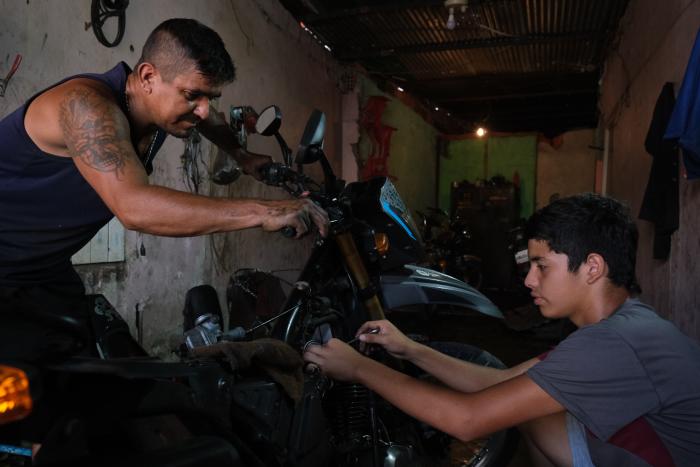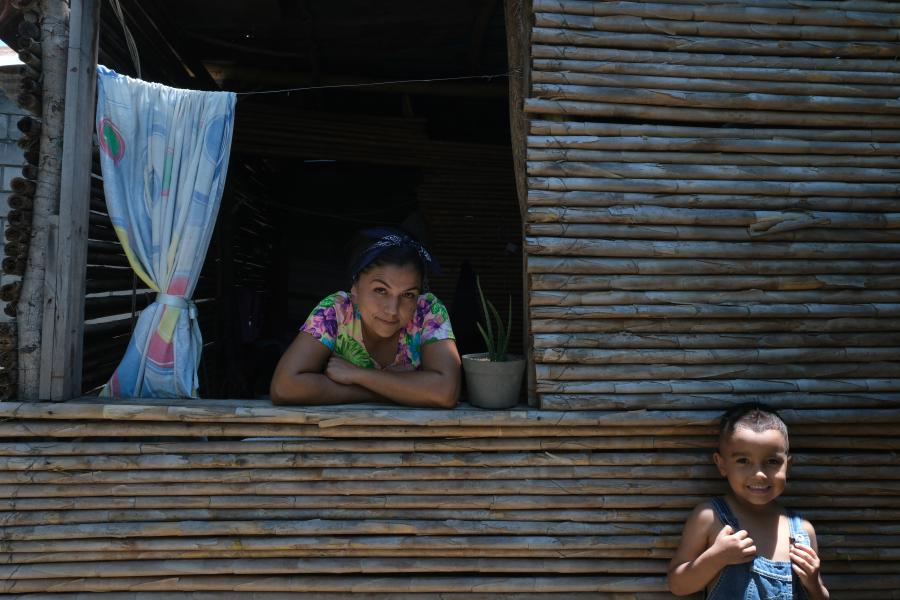2024 population planning figures
- Refugees and asylum-seekers: 892,200
-
Refugee and IDP returnees: 75,000
-
Other people in need of international protection** (OIP): 6,430,300
-
Others of concern***: 3,111,900
*Figures are aligned to RMRP 2023-2024 and do not include Venezuelan refugees and migrants outside Latin America and the Caribbean.
** Other people in need of international protection refers to people who are outside their country or territory of origin, typically because they have been forcibly displaced across international borders, who have not been reported under other categories (asylum-seekers, refugees, people in refugee-like situations) but who likely need international protection.
*** Others of concern refer to individuals who do not fall directly into any of the groups above but to whom UNHCR has extended its protection and/or assistance services.
For the reported figures consult the dedicated page on UNHCR operational data portal.
2024 Situation overview
Cross-border displacement and mixed movements from the Bolivarian Republic of Venezuela continue, despite a low-level increase in spontaneous return movements. According to the Regional Inter-Agency Coordination Platform for Refugees and Migrants from Venezuela (R4V)*, co-led by UNHCR and IOM, as of September 2023, there were over 7.7 million Venezuelan refugees and migrants worldwide, of which 84% (6.5 million) are in Latin America and the Caribbean. By mid-2023, there were over 300,000 recognized refugees, and almost 1.2 million asylum-seekers. UNHCR is planning to respond to 6.5 million Venezuelan migrants and refugees in the region in 2024.
Pendular movements along border areas are expected to continue as Venezuelans seek to address basic needs temporarily in neighbouring countries. However, a lack of viable options in some hosting countries drives many to move onward in search of a more stable future. Movements of refugees and migrants between host countries, including northbound movements, have significantly increased, and are expected to continue as Venezuelans and other affected nationals with heightened vulnerabilities seek sustainable protection and integration solutions. In the first nine months of 2023, over 400,000 people (63% of them Venezuelans) moved north through Panama’s Darien jungle, an almost threefold increase compared to the same period in 2022.
In the context of dynamic population trends (outflows, returns, deportations, cross-border pendular and onward movements), UNHCR will work across the region to support Venezuelan refugees and migrants, focusing on protection, socioeconomic integration, and multisectoral assistance, including education, health, shelter and water, sanitation and hygiene.

UNHCR will also provide overall operational coordination, planning, communication and information management services for the entire response. Inside Venezuela, UNHCR will support all population groups with humanitarian needs – refugees, asylum-seekers, internally displaced people, people at risk of displacement, returnees and deportees with protection needs – as well as communities in prioritized locations to build resilience.
According to the Refugee and Migrant Needs Analysis (RMNA) for 2023, more than 4.4 million Venezuelans still face difficulties accessing food, shelter, healthcare, education and formal employment, despite efforts by host countries to regularize and integrate them. In the case of Colombia, for example, more than 1.6 million Venezuelans have already been documented and more than 2 million biometrically registered.
According to the RMNA, 19% of refugee and migrant children are out of school, and more than 36% are without a regular status in their respective host countries. Based on available data in eight countries, employment levels of economically active refugees and migrants in countries of destination ranged from 97% in Peru to 61-62% in Costa Rica and Panama.
36% of Venezuelans in the region are still in an irregular situation, and 3 million may stand to benefit if regularization is supported and carried out effectively in countries such as Brazil, the Dominican Republic, Ecuador and Peru, as well as Colombia. It will be essential to monitor – and support where necessary – access to regularization exercises themselves, as well as effective access to rights, services and inclusion. Resettlement and complementary pathways will feature as increasingly important solutions for protection and or responsibility-sharing. Parallel to efforts for ensuring regular status and documentation, UNHCR will work in close cooperation with local governments and other key stakeholders such as development and financial actors and the private sector to enable the socioeconomic inclusion of asylum-seekers and refugees. UNHCR will prioritize emergency humanitarian assistance and protection services for new arrivals, population groups at heightened risk, and those considering returns, especially through collaboration with civil society.
Synergies between the Regional Refugee and Migrant Response Plan (RMRP) and Humanitarian Response Plan will be reinforced in 2024, focusing on activities implemented in border areas, reception and reintegration of returnees, the issuance of personal documentation, and support to national and regional campaigns against discrimination and xenophobia. According to the RMRP, the R4V response aims to assist 2.4 million refugees and migrants in destination, 415,000 refugees and migrants in transit, 284,000 refugees and migrants engaging in pendular movements, 122,000 Colombian returnees and 365,000 members of affected host communities. The RMRP will be updated, with revised population projections, on 6 December 2023.
* Population projections for end-2024 will be updated by the R4V Platform in the context of RMRP Update on 6 December 2023.
For the most recent stories, press releases and briefing notes, please visit the Emergency page on unhcr.org dedicated to Venezuela.
